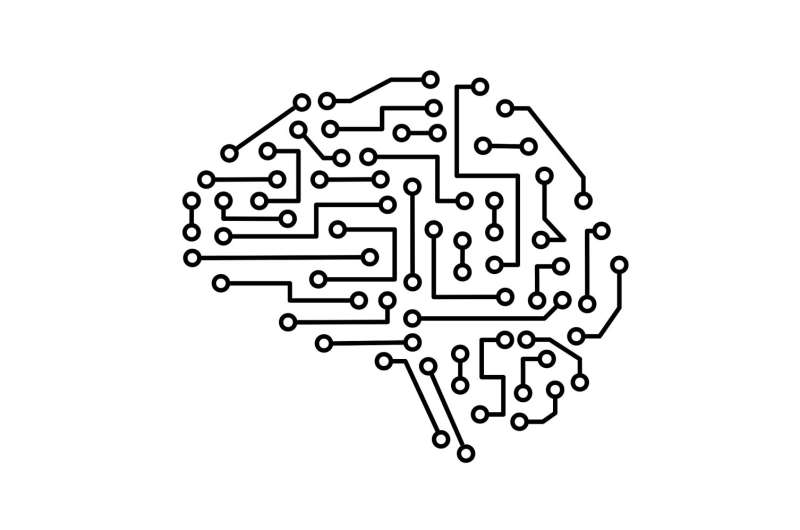Retina 'hardwired' to predict path of moving objects

Neural circuits in the primate retina can generate the information needed to predict the path of a moving object before visual signals even leave the eye, UW Medicine researchers demonstrate in a new paper.
"The ability to predict where moving objects will go is so important for survival that it's likely hardwired into all sighted animals," said Michael Manookin, an assistant professor of ophthalmology at the University of Washington School of Medicine. He led the research team with Fred Rieke, professor of physiology and biophysics.
Manookin and his colleagues report their findings in the journal Nature Neuroscience. Belle Liu and Arthur Hong, two UW undergraduate students, were the lead authors on the paper.
In the study, the researchers looked at how motion was processed by cellular circuits in the retina. The circuits the researchers focused on are composed of light-sensing photoreceptor cells, called cones; an intermediate layer of cells, called bipolar cells; and ganglion cells that collect signals from bipolar cells and transmit these signals out of the eye to other brain regions.
These circuits are made up of scores of hundreds of photoreceptor cells that connect to dozens of bipolar cells that, in turn, connect to ganglion cells, Manookin said. "The signals from the cones converge on the bipolar cells and the signals from bipolar cells converge onto a single ganglion cell, which has to extract motion information from these signals and relay that information to brain regions tasked with processing motion."
To understand how this was done, the researchers projected patterns that appeared to be moving away from, and toward, the retina and recorded the signals being generated by the ganglion cells in response to the movements.
They then analyzed the signals to see if the ganglion cells were generating what is called 'predictive motion encoding'—that is, patterns that reflect information that could be used to predict the future motion of an object.
"For example, if you present a movie of a ball moving across the visual field, you can record the spikes coming from the ganglion cell in response to that movie," Manookin explains. "Then you can calculate how much information the spikes contain about where the ball is likely to be in the future."
To evaluate how effectively the cells were transmitting predictive information, the researchers compared the performance of the ganglion cells to computer programs created to solve such problems. They found that the ganglion cells were nearly as effective at transmitting this predictive information as the best performing computer programs.
"That the retina, with such simple hardware, is doing these calculations so efficiently is just remarkable," Manookin said.
The researchers found that the circuits can extract this information because of crosstalk between the bipolar cells. Bipolar cells are in close contact with adjacent bipolar cells. If one becomes excited by signals from its photoreceptor cells, in addition to sending a signal to the ganglion cell, it also passes some of that excitement along to its neighboring bipolar cells.
The neighboring cells are then "primed" so that, if they also receive signals from their photoreceptor cells, they are more likely to send a strong signal to the ganglion cell. In this way, as a moving object passes over the visual field, the information about that movement "ripples" through the network of bipolar cells.
The ganglion cell ultimately collects the incoming information from the bipolar cells and encodes it in signals that provides the brain with information about the motion of the object. With information from many thousands of these ganglion cells about the path of the object, the brain can then quickly predict its trajectory.
"A 90 or 100 mile per hour fastball can travel more than seven feet before the signals gets out of your retina," Manookin said. "To hit the baseball, you have to be able to predict where it will be in the future. This ability to predict the movement of objects in our environment is also needed in everyday activities like driving a car or even walking. It's an ability so important to survival that evolution has hardwired it into our nervous system."
Ultimately, this knowledge of how the retina processes information can be used to develop technologies for restoring meaningful vision to people suffering from blindness, Manookin said.
More information: Liu, B. et al, Predictive encoding of motion begins in the primate retina, Nat Neurosci (2021). DOI: 10.1038/s41593-021-00899-1



















